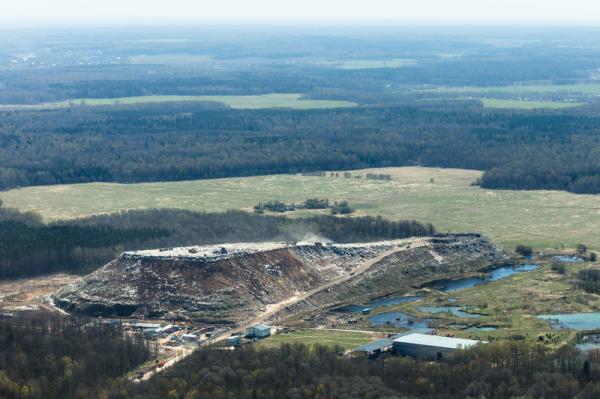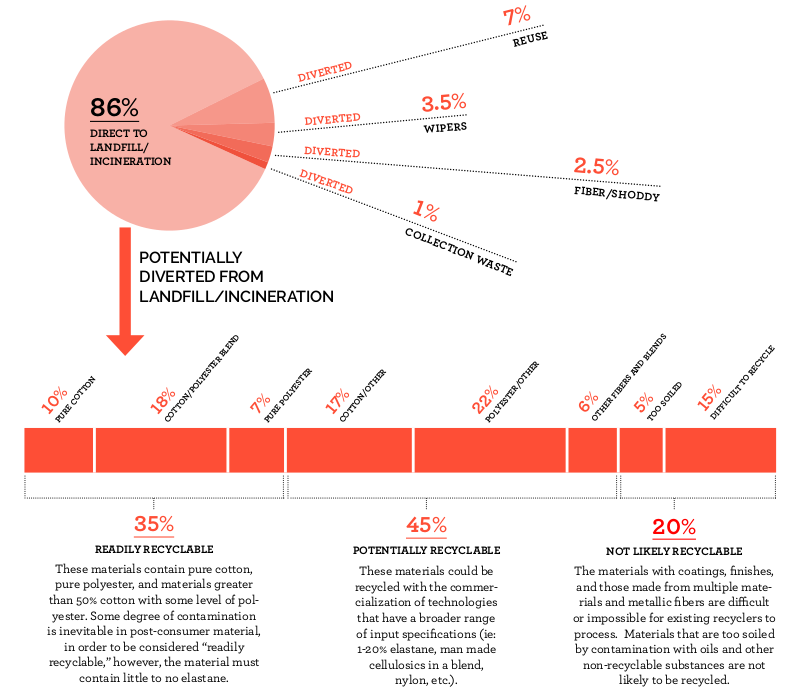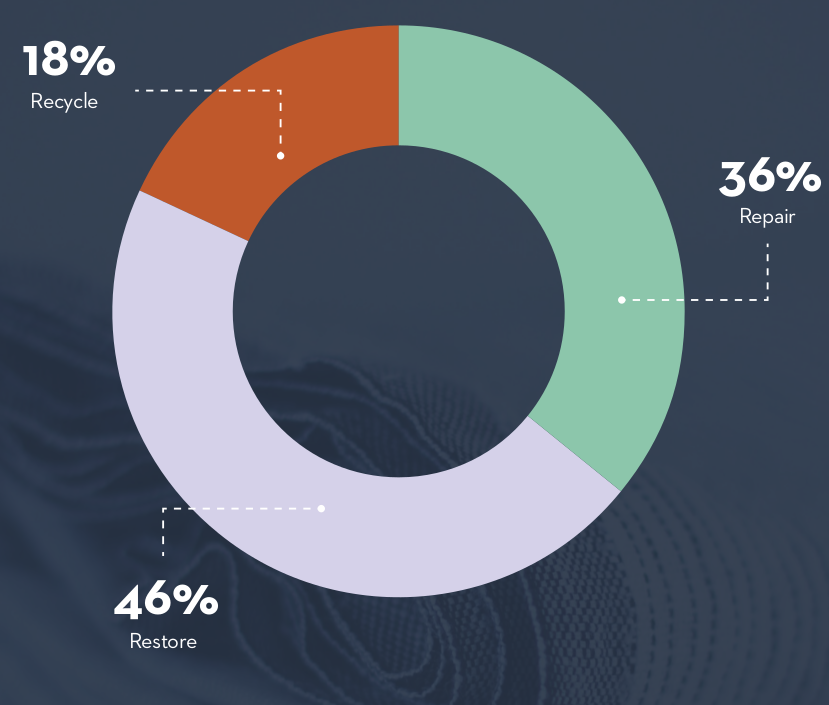
The US are known – rightly or wrongly – as the geography where probably most waste per capita is being generated. And land-filled.
Granted, incineration – widely practised in Europe and more advanced Asian countries – is not a panacea either. But in the current state of things, it at least allows to recover heat energy, avoids generating legacy issues such as ground water pollution (assuming state of the art exhaust filtration), and is even conductive to the recovery of some materials such as metals for example thanks to post-treatment options.
Yet – the world, by and large, operates based on land-filling, and among developed economies, the US possible the most prominent example.
Given that incinerators take years to build – never mind that they still annihilate valuable resources, and the political process for the budget approval – the only way to improve the situation any time soon is: not to landfill. At all. Or at least as little as possible, and that asap.
In other words: to divert as much of the ‘waste’ that is going to landfill into alternative uses and applications.
Enter hence the Circularity discussion.
Only a few weeks ago, 2 reports on textiles and the circular economy have been published, both of which look at the issue from different, and complementary perspectives:
- Leading Circular: Pathways for Evolving Apparel and Textile Businesses from Linear to Circular, published by The Renewal Workshop, focuses on already existing and succesfully implemented business models that leverage what was so far considered waste, and create value from it.
- The first interim report by the Accelerating Circularity initiative focusing on Circular Supply Chain Potential at the US East Coast, on the other hand, contributes an approximative quantitative status quo of textile waste attributes and flows. It further outlines the hurdles and flaws of the current waste and recycling system, and finally goes on to outline – importantly – some of the most evident the opportunities of change, not the least in terms attainable economical benefits.
Textiles may be a peculiar product. Yet, those aware of e.g. the metal or plastic recycling processes, will no doubt see sufficient overlap between their own industries, and the insights presented in both of these reports.
In other words: textiles may not be everyone’s cup of tea, but it is a sufficiently abundant material, with touch points from field through industry to the end-consumer, that its problems, hurdles and opportunities are reasonably representative for those issues encountered in other industries and with other materials also.
One Man’s Rubbish is another Man’s Treasure.
Hector Urquhart, Introduction to Popular Tales of the West Highlands (1860s)
So – what is it that we can learn from these 2 reports, side by side?
In addition to some more accurate statistics, succinct summaries of technological achievements and challenges, and systemic hurdles – all of which very needed and welcome – the following two points stand out:
There is plenty of value in our waste – in theory and in practice

Most textiles discarded are not actually waste, but instead a largely underused raw material.
While today 86% of all textiles discarded (US East Coast) go to landfill and/or are incineration, that nearly same amount – 80% – could in principle be recycled. Around half of it fairly immediately – the technologies exist -, the other half with somewhat more lead-time, but the technologies to do so are being scaled out to industrial levels as we speak.
The largest challenge: keeping it out of landfill/incineration at all
… and then ensuring that the items are funnelled back to a location where their value can be suitably exploited.
Waste – depends on the eyes of the expertise of the beholder

Source: The Renewal Workshop, ‘Leading Circular: Pathways for Evolving Apparel and Textile Businesses from Linear to Circular‘, Page 11.
Returns, items exchanged under guarantee, but also dead stock of a fair few seasons ago, are an issue of considerable financial and logistical importance for many brands that produce consumer goods.
The Renewal Workshop’s service allows brands to ‘refurbish’ such items and restore them whenever possible to a sellable status. In their experience, nearly half (46%) of all goods only required light or minor repairs to restore them to ‘like new’ status.
Another 36% required more substantial or noticeable repairs, but could be sold once fixed.
Only 18% of items originally deemed as ‘waste” actually needed to be recycled. 0% of this last category ended in landfill.
What is the bigger picture learning?
Waste, in the way we know and ‘practice’ it today is a phenomenon of abundance – or at least perceived abundance. Abundance of
- Resources.
- Space.
- Cash and earnings.
- Access to markets and production geographies.
… To just name a few.
The heaps and piles of waste we generate are the direct result of our believe and perception that burying (land-filling, discarding) is cheaper than investing time and effort to find ways and ideas of how to ‘make something’ out of that ‘nothing’.
Our believes and perception are equally the direct result of a mistaken accounting approach.
One that focusing in doing fairly short-term calculations very accurately, but ignoring long-term effects.
One that assumes that cost carried by 3rd parties (such as nature, the municipality, or trash pickers) are a non-cost, as not paid – as of yet – out of the ‘waste’-generating pocket.
And one that does not consider the opportunity cost of the earnings lost by not using those resources in a more (commercially) adequate way.
The learning tells us also that people (or companies) are not willing to change, until indeed the solution is served to them on a silver tray. As is for example the cases with The Renewal Workshop, whose service indeed takes the hard and ‘menial’ hands-on work off the brand’s responsibilities – legally, financially, marketing-wise.
All this taken together are interesting insights.
Teach us to look out for start-ups whose value proposition is two-fold:
adding value to waste, while servicing the rather unimaginative large companies who are too inflexible to innovate internally.
It also means that those start-ups may be the winners of the economies of the future. Rather than their – as of yet well-known – clients.
Further reading: Download the reports

